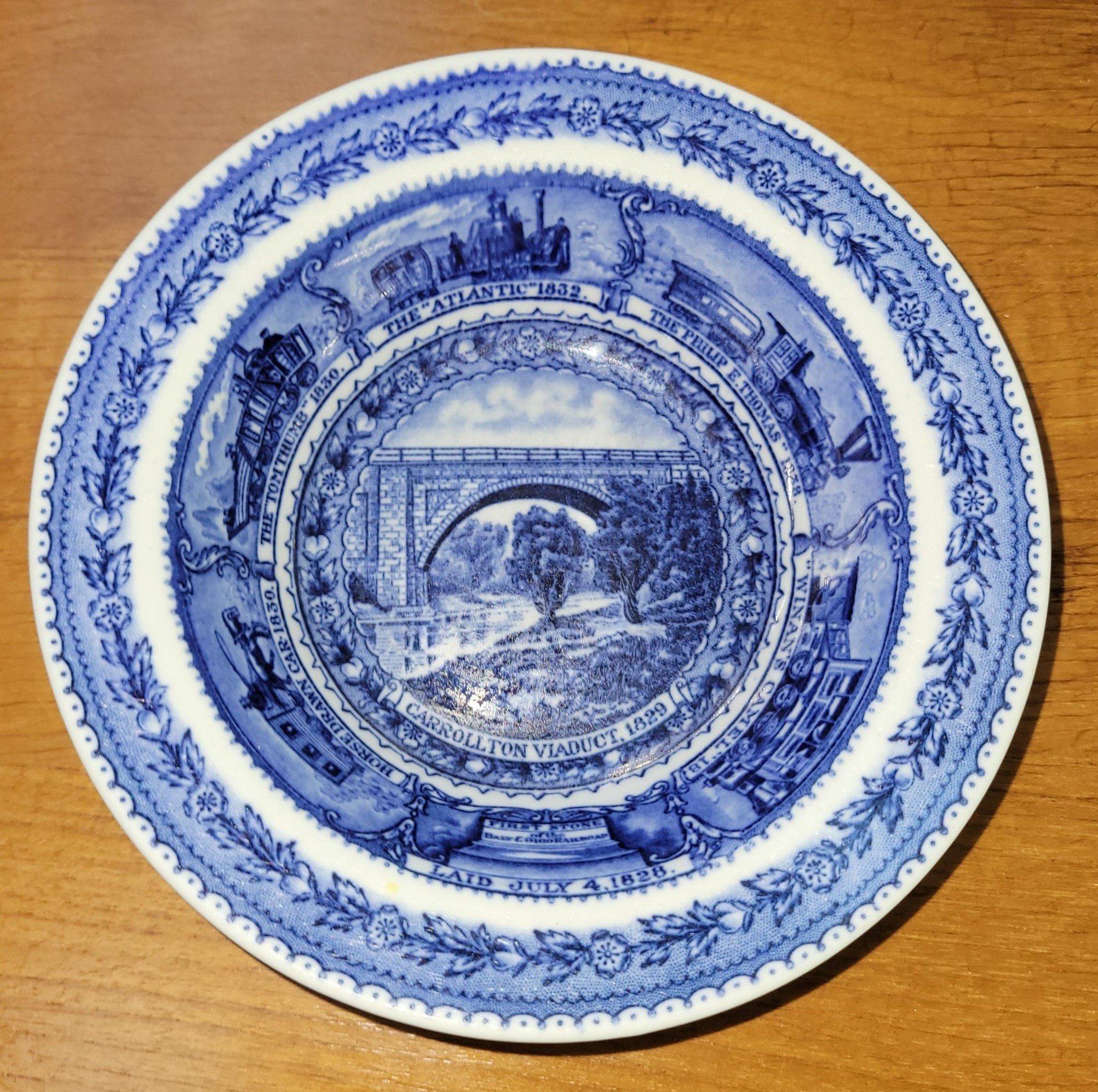Bill Roberts
When I was 8 or 9 years old, I walked to Evanston’s Lincolnwood Elementary School by way of Central Park Avenue and Grant Street, always passing through Perkins Woods, where Robin Hood and Zorro and Tom Sawyer made occasional forays.
And, from time to time, I walked to my Grandma Roberts’ apartment on Bennett Avenue for lunch, climbing a wooden staircase off the alley to her second-floor kitchen door.
Lunch was invariably a plate of chunky peanut butter-and-jelly sandwiches and a bowl of tomato soup.
Years later, when my Grandma was downsizing, I saw two of those bowls and quickly laid claim to them!
I had always loved those bowls, and the early locomotives which circled within them, but it was only in 2021 that my curiosity led me to discover a booklet online titled Concerning the Blue China— The Baltimore and Ohio Railroad Company— Dining Car Department. Here are some excerpts:
This booklet was prepared originally for the Baltimore and Ohio Centenary Exhibition and Pageant held in 1927, Baltimore, Md., which was known as the “Fair of the Iron Horse,” and has been reprinted in connection with the Company’s exhibits at A Century of Progress, at Chicago, 1933.
Now, for the hundredth anniversary of the founding of the Baltimore and Ohio Railroad, the blue china in use on its dining cars was especially prepared in the United States of America to celebrate this centenary birthday of the Father of American Railroads.
The dining cars needed all sorts of things: cake covers, celery troughs, pitchers, plates, platters, and tea pots, and oatmeal bowls— repurposed as Grandma’s soup bowls!
Here’s the booklet’s description of those bowls:
Advancing from the horse-drawn car, for which the road was originally designed, past the first American built locomotive, the ‘Tom Thumb,’ we come to the little ‘Atlantic,’ which was in actual service on Baltimore and Ohio tracks for more than sixty years, and can still be run under its own steam at nearly one hundred years of age. The ‘Philip E. Thomas,’ with its large smoke-stack, was a familiar type of locomotive until Ross Winans . . . built . . . his famous camel-back locomotives, the most powerful engines of their day . . . which carried the Baltimore and Ohio trains with Union troops and supplies over the heavy grades of the Alleghany Mountains during the trying days of the Civil War.
This forms a pageant . . . from the First Stone of the Baltimore and Ohio Railroad, laid on July 4, 1828, around the plates and back once more to this corner stone. . . .
The Carrollton Viaduct . . . is the oldest stone arch railroad bridge in America, being the first one built by the Baltimore and Ohio in order to carry its original line. . . .
The quality of these bowls is shown by the fact that their vivid blue colors haven’t faded at all, nor has my memory of those wonderful lunches with my Grandma!
